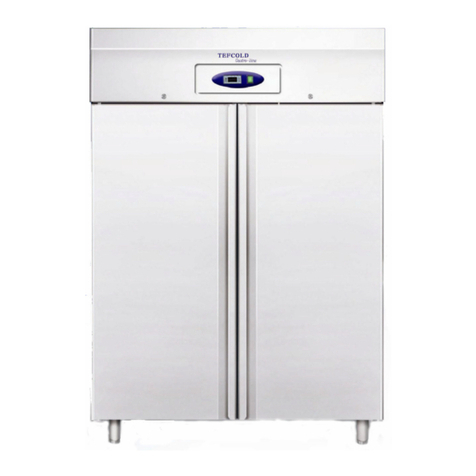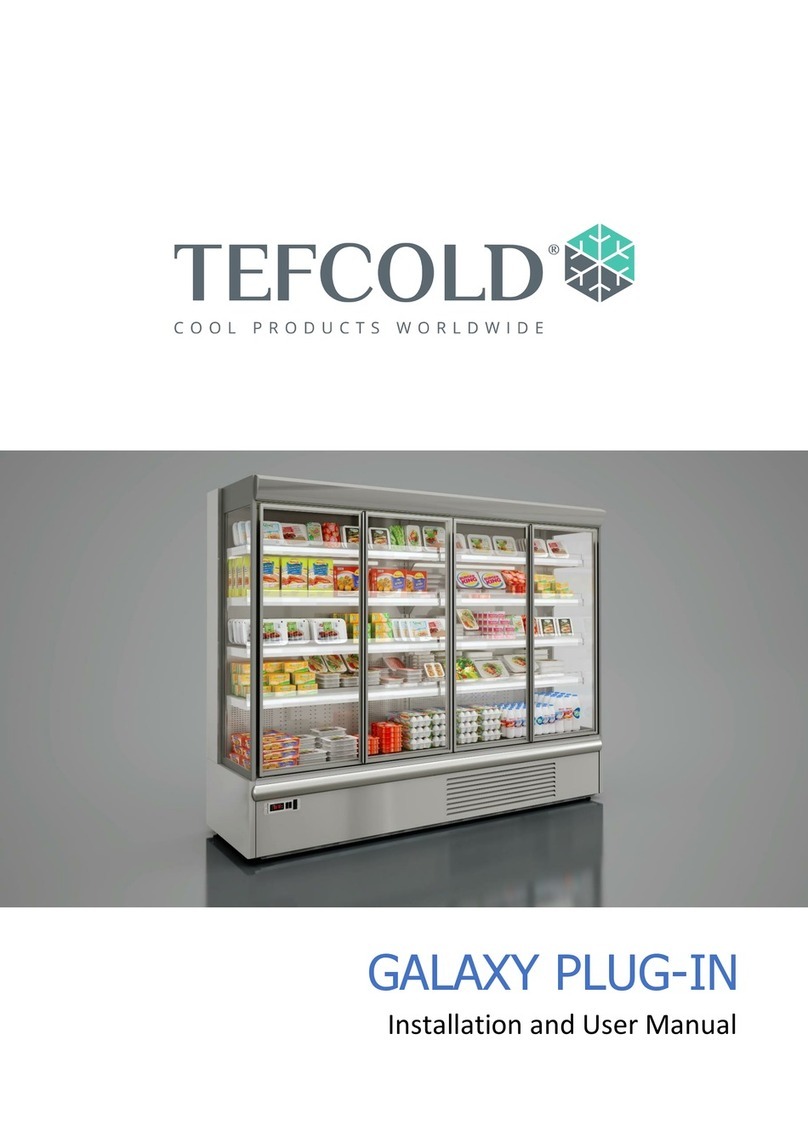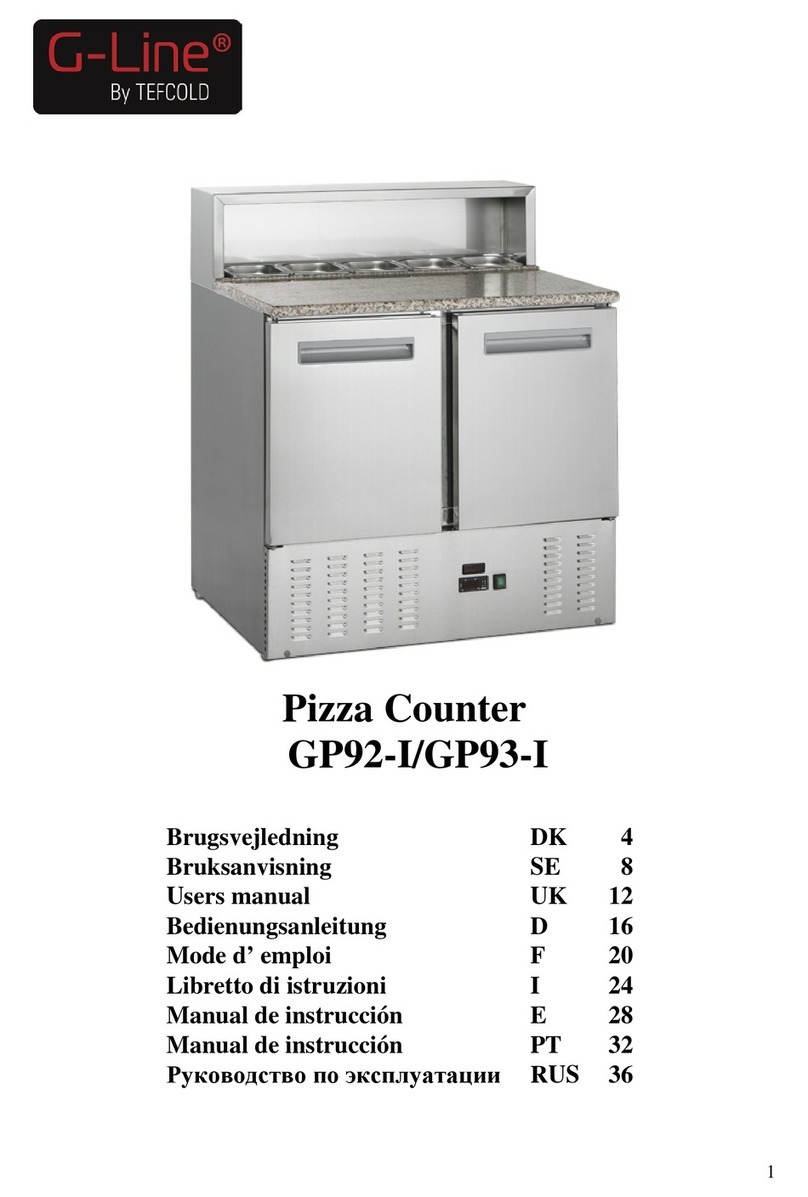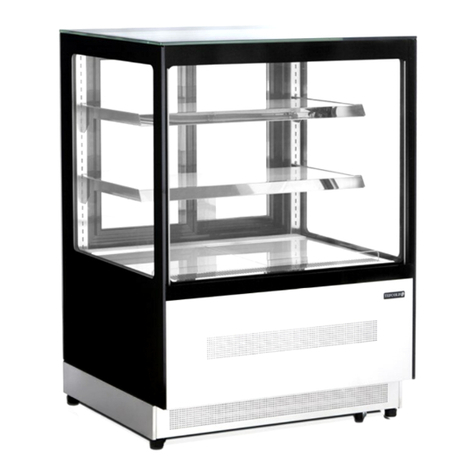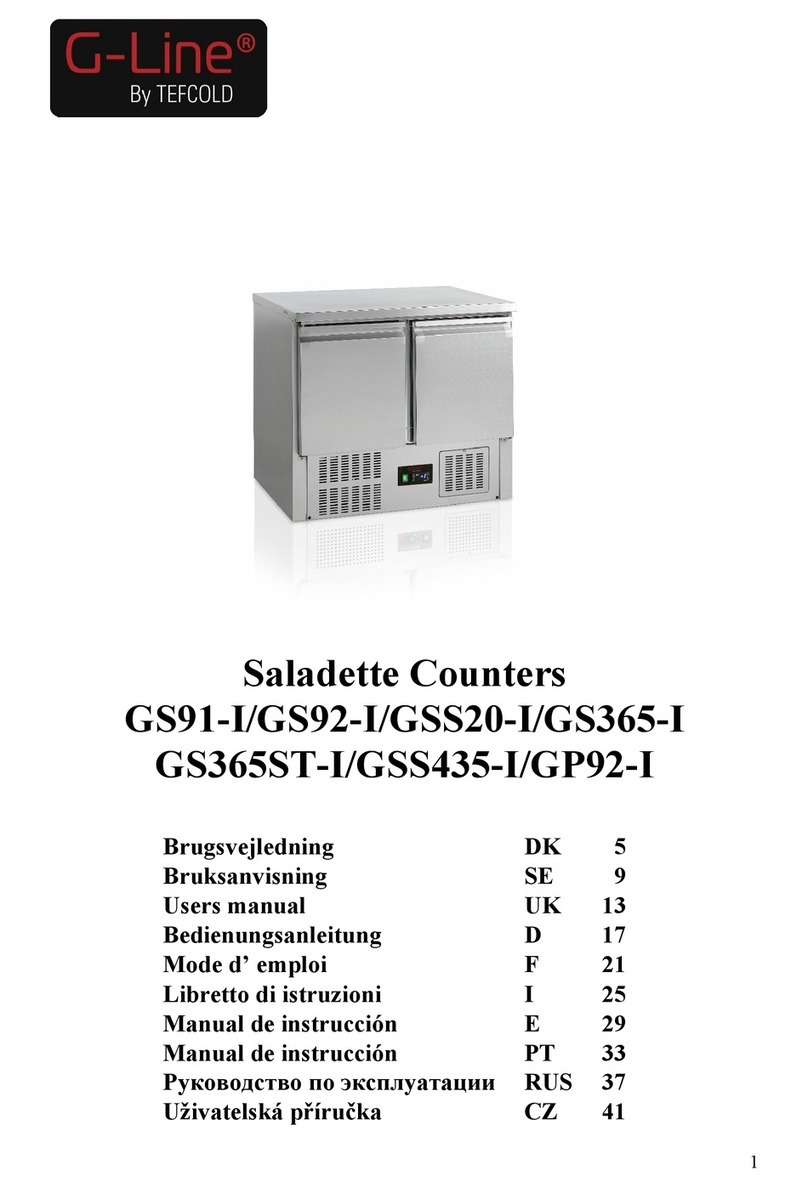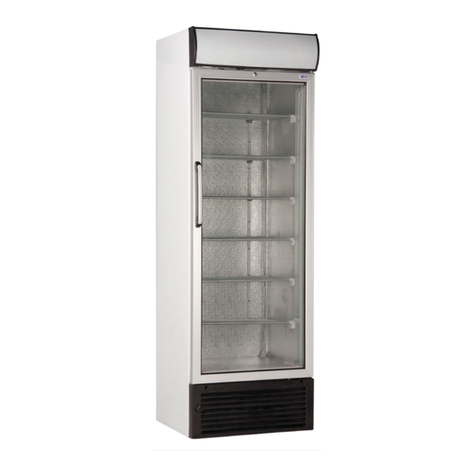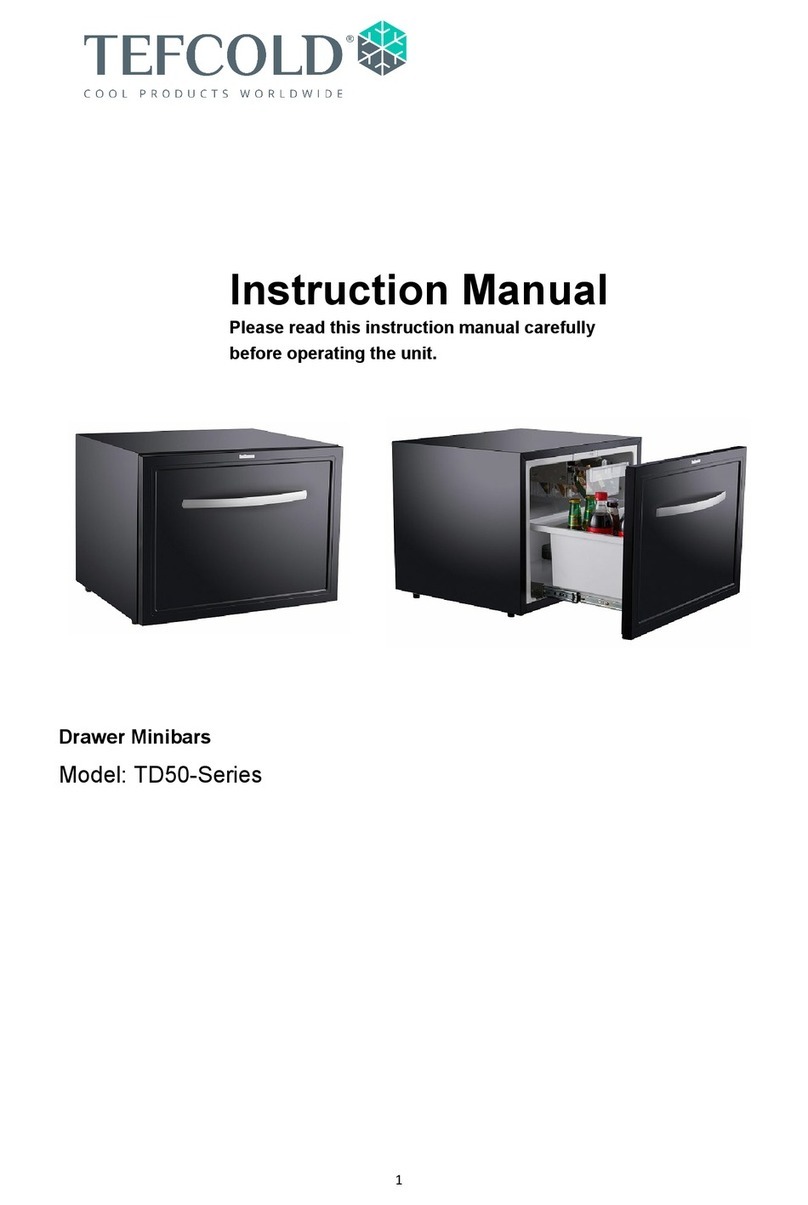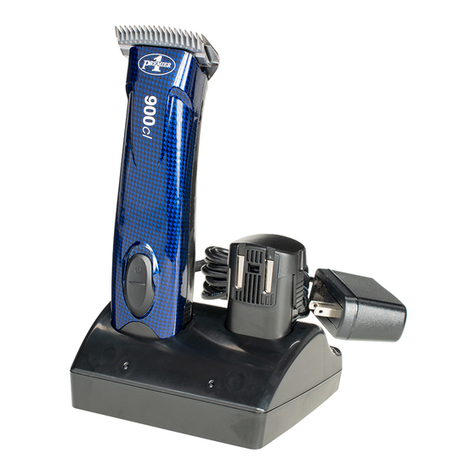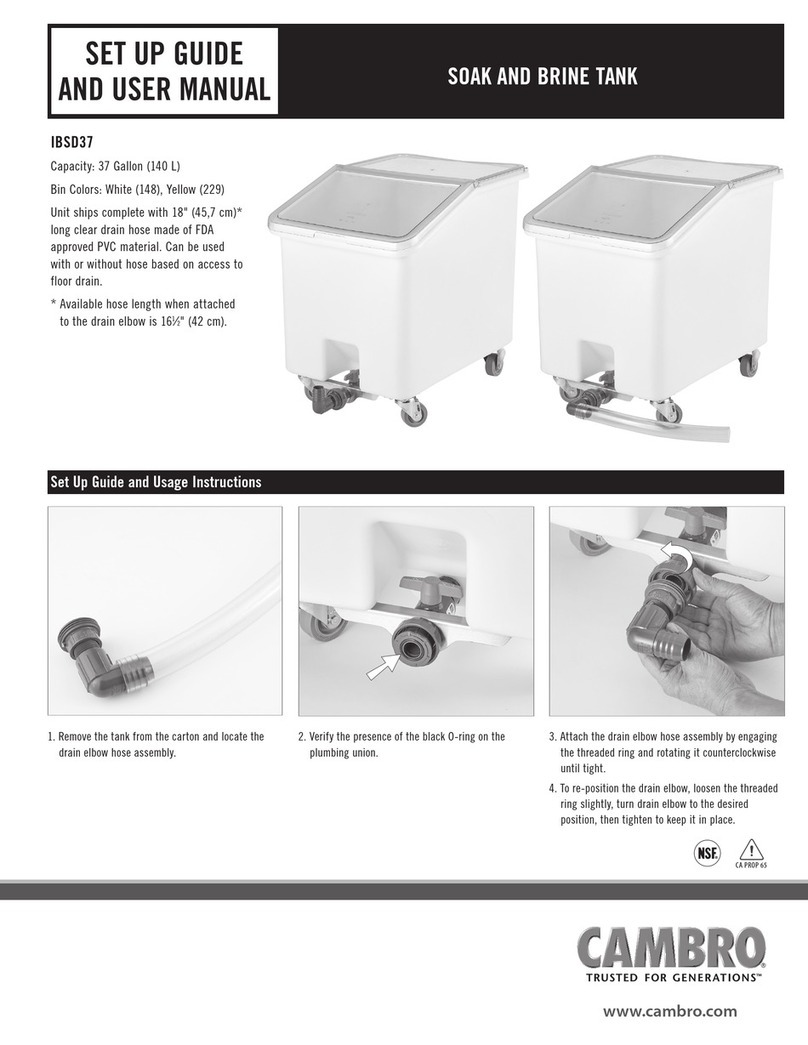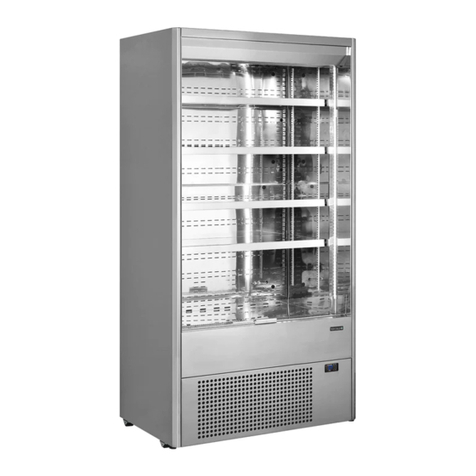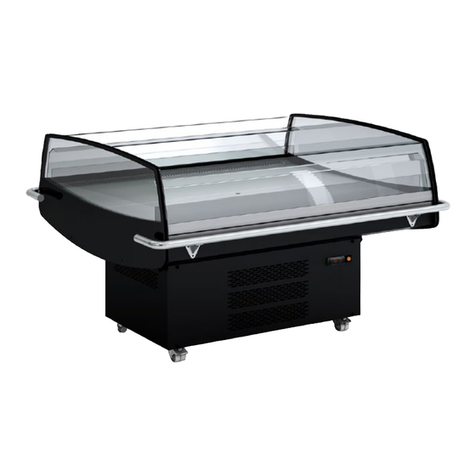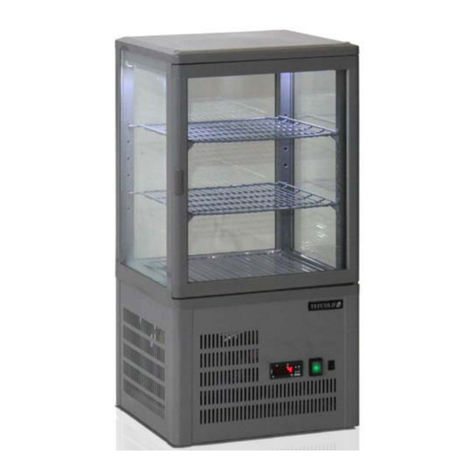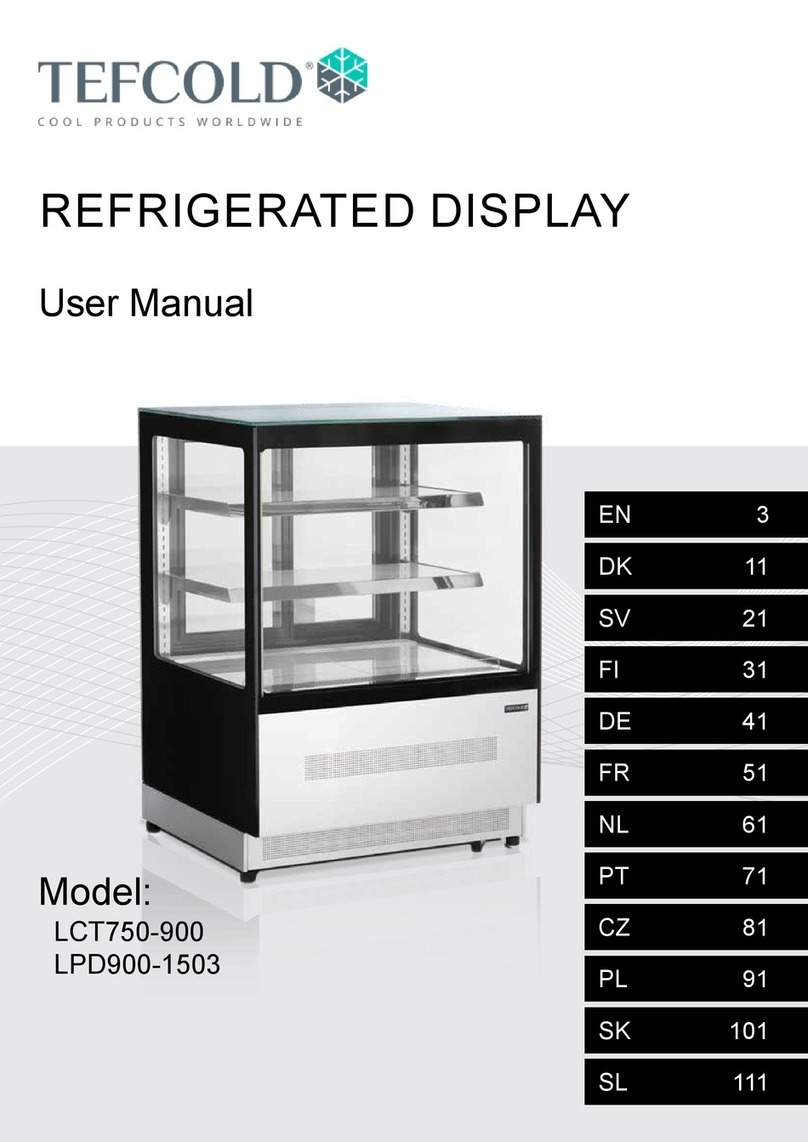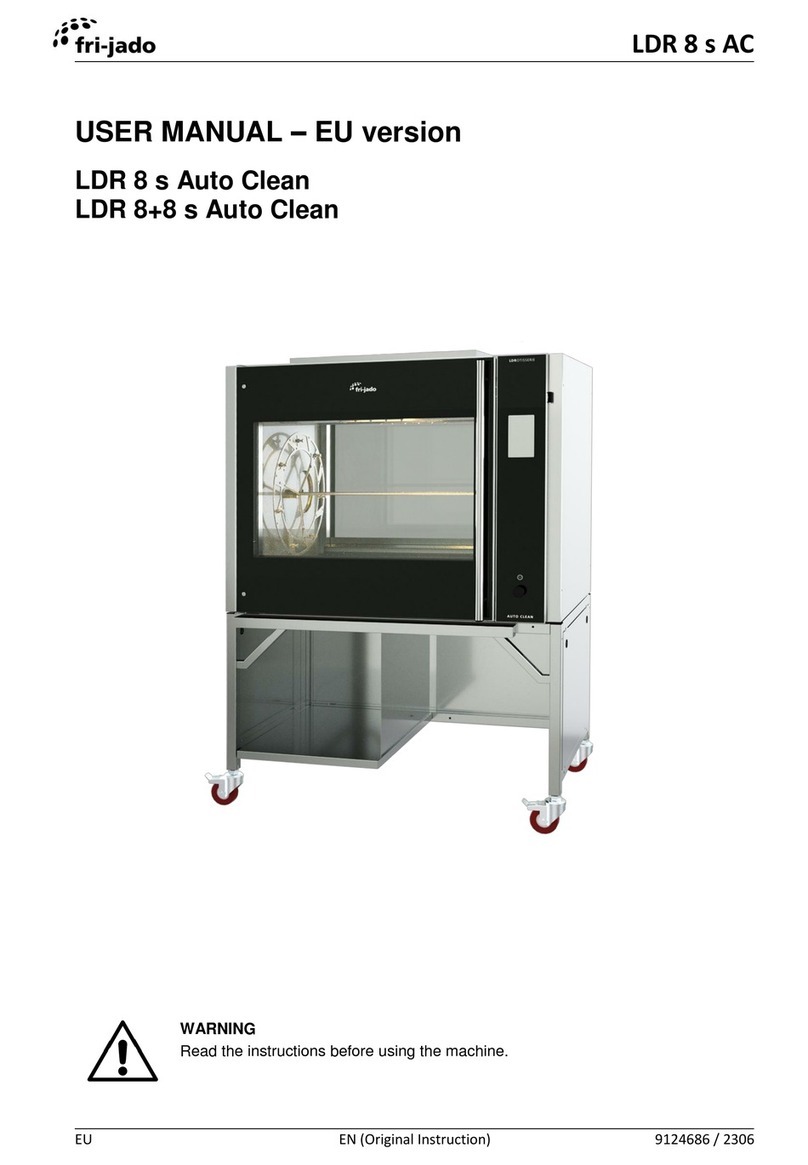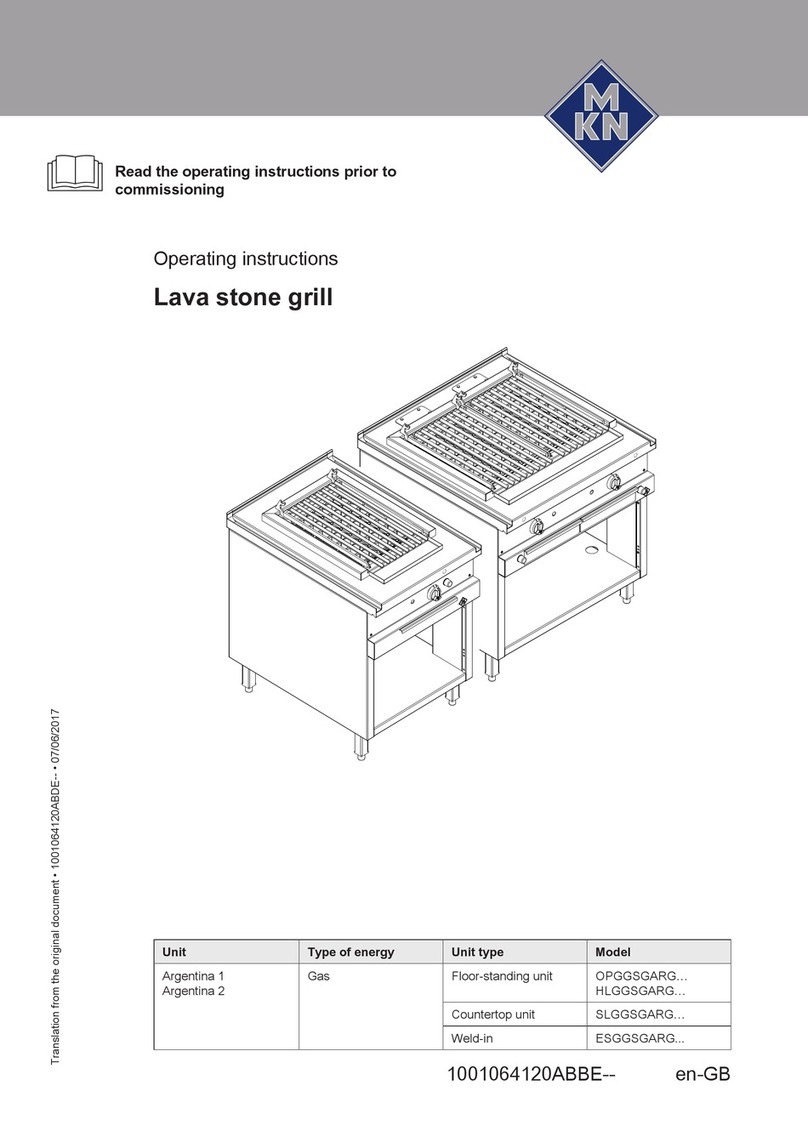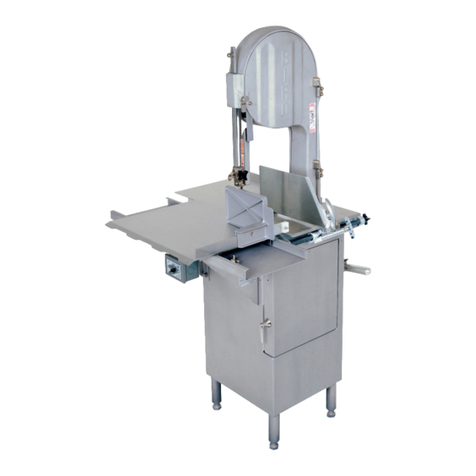
Only for R600a and R290 refrigerant cabinet
•This Refrigerator containd R600a or R290 flammable refrigerant. Keep clear of obstruction all ventilation
openings in the appliance enclosure or in the structure for building-in (IEC/EN 60335-2-89:2002)
•Do not use mechanical devices or other means to accelerate the defrosting process, other than those
recommended by the manufacturer (IEC/EN 60335-2-89:2002)
•Do not damage the refrigerant circuit (IEC/EN 60335-2-89:2002)
•Do not use electrical appliances inside the food storage compartments of the appliance, unless they are of
the type recommended by the manufacturer (IEC/EN 60335-2-89:2002)
•Appliances which use flammable insulation blowing gases, instructions shall include information regarding
disposal of theappliance (IEC/EN 60335-2-89:2002)
•In order to reduce flammability hazards the installation of this appliance must only be carried out by a
suitably qualified person (IEC/EN 60335-2-89/A1:2005)
•Electronic elements may only be replaced by a qualified electrician or person with experience in electrical
engineering!
•
This appliance is not intended for use by persons (including children) with reduced physical, sensory or
mental capabilities, or lack of experience and knowledge, unless they have been given supervision or
instruction concerning use of the appliance by a person responsible for their safety.
•Children should be supervised to ensure that they do not play with the appliance.
•-If the supply cord is damaged, it must be replaced by the manufacturer, its service agent or similarly
qualified persons in order to avoid a hazard
For reasons associated with the safeguard of the environment, and in compliance with Directives 2002/96/EC
and 2003/108/EC, 2002/95/EC (and the relevant local national laws that implement th
refrige-
rated products and frozens must be disposed of and recycled at the end of their life cycle. Making sure
that this is complied with, the user significantly helps prevent potential repercussions on the environment and on
public health.
Cabinets including a refrigerating circuit and a power plug (therefore ready for service) are defined WEEE:
"Waste Electrical and Electronic Equipment?. Certain instructions concerning their treatment at the end of their
life cycle must therefore be observed.
- Notify an agency competent for the disposal of potentially flammable gas (Propane R290)
- Deliver the cabinets to the appropriate centres specialising in WEEE recovery and recycling.
- Otherwise, return the cabinets to the seller or to the manufacturer.
-
At any rate, the WEEE to be processed must be collected following criteria that guarantee the protection of the
cast-
off appliances during transportation and handling. Do not leave the appliances unattended, not even for a
few days
- Make sure that doors are closed and fasten mobile parts accordingly.
- Remove the power plug from cast-
off appliances and cut off their power cord in order for them to become
unusable
- the product is subject to ?separate collection?, must not be treated as house
delivered to a landfill.
For further details about treating, reclaiming and recycling this product, contact the relevant local office,
the household waste collection service or the seller from which the product was purchased.
TYPES OF MATERIALS FOR DISPOSAL PURPOSES
Type of PACKAGING material:
- Wood
- Styrofoam
- Polyethylene
- Cardboard
Types of materials the CABINET is made of:
- Iron tubes (feet)
- Al copper (cooling circuit, electrical system, finishing material)
- Tempered glass
- Expanded polyurethane (insulation)
- Galvanised sheet metal (base, inside parts)
